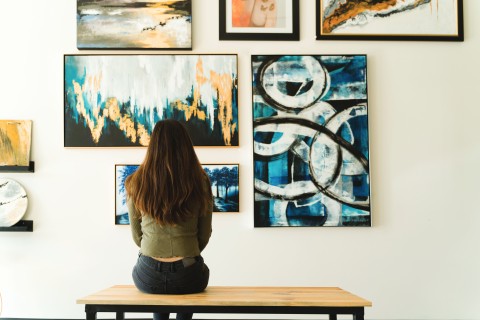Drawing youth to contemporary art museums - MCAA Magazine March 2022

Inspiring youth to join the creative sector, the EU-funded YouthInMuseums project explores the rise of youth programmes in art museums, and also looks at the potential for professional development outside of formal education.
Carolina Carvalho Palma da Silva, in her own words
I studied Fine Arts at university, but soon realised I was more interested in working with people and in understanding the potential of art to create relations with and among people, than being an artist myself. I was gradually attracted to art education, in particular art museum education. I worked as a freelance museum educator in different contemporary art museums in Lisbon before moving to London to do my PhD I was there for seven years and was the Curator: Community Programmes at Whitechapel Gallery, before moving back to Portugal to work as a researcher at the Institute of Social Sciences, University of Lisbon.

Studying the educational provision and professional training available for youth in contemporary art museums, and how these programmes boost young people’s sense of agency and career opportunities in the creative arts, the project focuses on a pilot case study co-developed with a group of young people and the Museum of Art, Architecture and Technology (MAAT) in Lisbon.
Researchers are aiming at developing a deeper understanding of young people’s socio-cultural interests - their perceptions, motivations, and expectations about art and museums; and of how long-term youth programmes can inform museums’ future programming for this age group, says the project lead, Carolina Carvalho Palma da Silva, who spoke to us about the YouthInMuseums project.
How was the idea for the project born?
The project Youth in Museums emerged from my PhD research, which looked at youth collectives in contemporary art museums, mainly in the UK and the US. Being from Portugal and having worked in different museums in Lisbon, I was quite interested in understanding how my international experience and research could be applied to a different context, namely the Museum of Art, Architecture and Technology (MAAT) in Lisbon. The recent professional turn in youth programming in museums was also something that I wanted to research more in-depth - in particular, the influence between youth programmes in science and contemporary art museums.
What’s the aim of the project? How will it improve our understanding of young people’s socio-cultural interests, and additionally, how can youth programmes help inspire museum planning?
The project aims to research the educational provision and professional training available for youth in contemporary art museums, and how these programmes can enhance participants’ sense of agency and career opportunities in the creative sector. Another aim is to analyse the potential of a tier-based structure when engaging with this age group (15-25), as it offers them continuous possibilities for their personal, social, and professional development outside of formal education. Using a participatory methodology, the project will be co-developed with MAAT and a group of young people, which will make their voices more audible within the institution.
What are some of the main challenges in undertaking the project, and how are you overcoming them?
The project was planned before the pandemic and it started in September 2020, when most museums were still operating under very restricted conditions. I decided to incorporate the issues raised by the pandemic into my research and analyse its impact on youth programmes in museums. Readjusting my work plan in terms of fieldwork to this unprecedented situation has been very challenging. To ensure that the planned focus groups with youth and local sociocultural partners were not online, I had to reduce the number of participants. Nevertheless, this has allowed for a more in-depth and cohesive group to be formed.
Vanessa Alexakis
MCAA Editorial Team